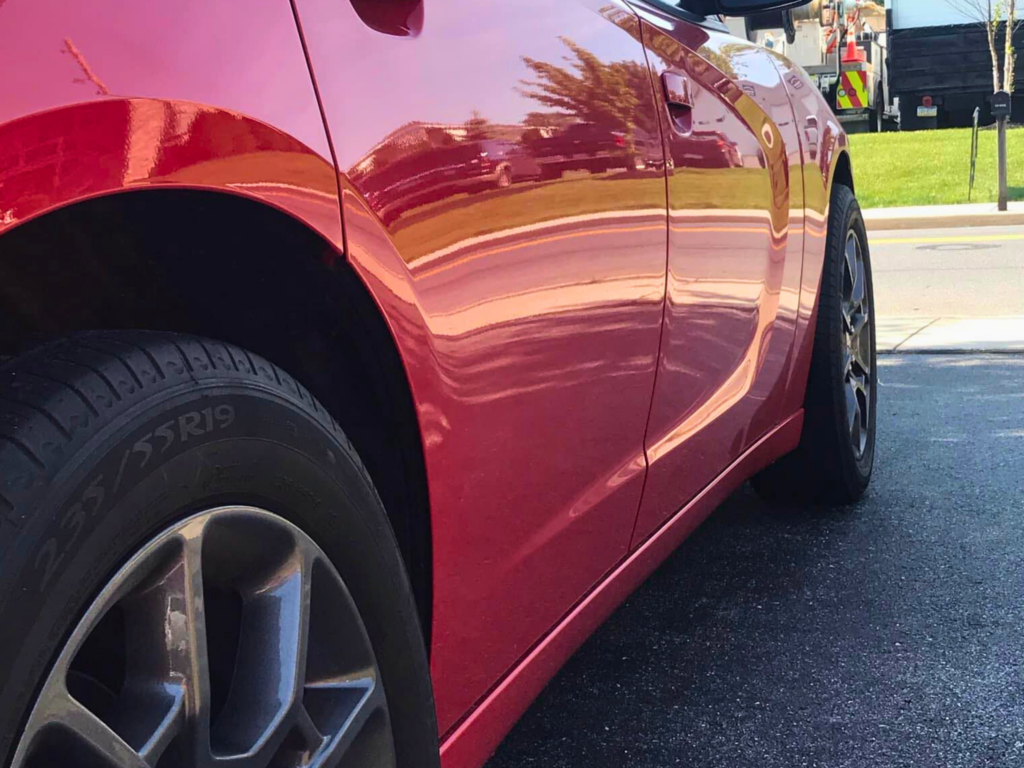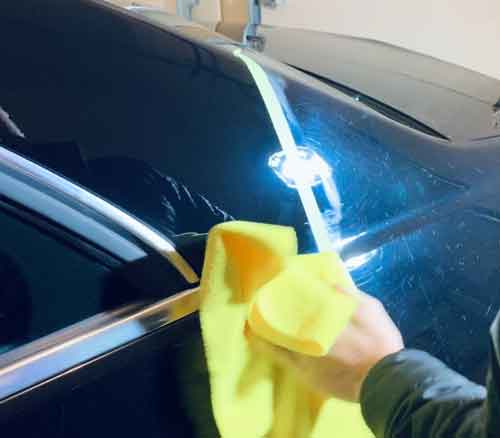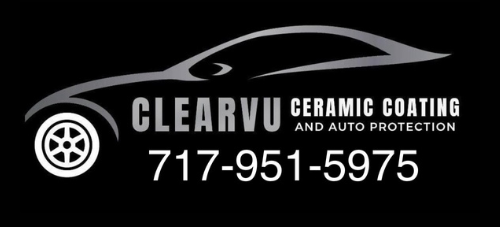When it comes to keeping your car looking brand new and safeguarding it from the elements, protecting its exterior should be a top priority. The paintwork on your vehicle is constantly exposed to potential damage from environmental factors like road debris, harsh weather, UV rays, and even bird droppings. Fortunately, there are two highly effective solutions available to you as a car owner seeking to preserve the pristine condition of your car’s exterior: paint protection film (PPF) and ceramic coating.
Both of these protective treatments provide superior defense against different types of damage, but they work in distinct ways, offering unique benefits depending on your needs. While PPF acts as a physical barrier, absorbing impact and preventing scratches and chips, ceramic coating creates a hydrophobic surface that repels contaminants like water, dirt, and grime, making your car easier to clean and maintain. Understanding the differences between these two options is essential in deciding which one is the right fit for your vehicle.
In this blog post, we’ll compare paint protection vs ceramic coating, delve into the pros and cons of each, and help you make an informed decision about which solution will best protect your car’s finish and keep it looking flawless for years to come.
What is Paint Protection Film (PPF)?
Paint Protection Film (PPF) is a high-quality, clear, and durable film applied to the painted surfaces of your vehicle. Made from a special polyurethane material, PPF acts as a virtually invisible shield, protecting your car’s paint from a wide range of environmental damage. The film is specifically designed to absorb impacts, such as scratches, stone chips, road debris, and minor collisions, preventing them from damaging the underlying paint. Because of its toughness, PPF is especially effective at protecting high-impact areas of your vehicle, such as the front bumper, hood, side mirrors, and door edges, where chips and scratches are most likely to occur. One of the key advantages of PPF is its self-healing properties. Minor scratches and swirl marks will disappear on their own when exposed to heat, ensuring the film remains smooth and effective over time. PPF provides a physical layer of defense against both everyday hazards and more severe impacts, keeping your vehicle’s exterior looking pristine.

What is Ceramic Coating?
Ceramic coating is a liquid polymer applied to your car’s exterior surfaces that chemically bonds with the paint, creating a permanent protective layer. Unlike PPF, which acts as a physical barrier, ceramic coating provides a hydrophobic effect that repels water, dirt, and other contaminants, making the surface easier to clean. When water comes into contact with a ceramic-coated surface, it forms beads and rolls off, carrying dirt and grime with it. This effect significantly reduces the amount of dirt, mud, and other debris that sticks to your vehicle, keeping it cleaner for longer and reducing the frequency of washes. Ceramic coatings also offer UV protection, which prevents harmful rays from breaking down and fading your car’s paint over time. This helps maintain the vibrant color and glossy finish of your vehicle. Another benefit of ceramic coating is its ability to resist chemicals, bird droppings, tree sap, and other contaminants that can typically cause long-term damage to your paint. With proper maintenance, a ceramic coating can provide long-lasting protection and maintain your car’s shine while offering an easier, more efficient cleaning process.
PPF vs Ceramic Coating: Key Differences
Protection Level
- Paint Protection Film is known for its superior physical protection. It acts as a shield against scratches, chips, and abrasions, making it ideal for cars that are frequently exposed to harsh conditions, like off-roading or highway driving. The film is thicker and provides a more significant physical barrier against road debris and impacts.
- Ceramic Coating, on the other hand, excels in protecting your car’s paint from contaminants like water, dirt, bird droppings, and tree sap. It forms a tough, invisible layer that protects against stains and etching, but it’s not designed to protect against physical damage like PPF. Ceramic coating vs PPF in terms of scratch and chip protection often comes down to the severity of the damage you’re concerned about.
Durability
- Paint Protection Film offers long-lasting durability, with some high-quality PPF products lasting 5 to 10 years or more with proper care. It’s particularly effective at preventing physical damage like stone chips and scratches.
- Ceramic Coating typically lasts between 2 to 5 years, depending on the quality of the coating and maintenance. While ceramic coatings offer excellent protection against contaminants, they won’t provide the same physical defense as PPF.
Self-Healing Properties
- PPF has self-healing properties, meaning that minor scratches or swirl marks can disappear over time as the film’s surface heats up. This is especially beneficial for keeping your car looking pristine, even after exposure to small abrasions.
- Ceramic Coating, however, doesn’t have self-healing capabilities. Once the coating is damaged, it generally cannot repair itself. However, it can be easily maintained and re-applied as needed to restore its protective properties.
Maintenance
- Paint Protection Film requires less maintenance than ceramic coatings. While it’s recommended to regularly wash your car, PPF doesn’t require special treatments. It remains intact, offering continuous protection with minimal upkeep.
- Ceramic Coating does require a little more maintenance. While it makes cleaning your car easier (thanks to its hydrophobic properties), you’ll need to keep the coating topped up with regular maintenance products, such as refreshers or boosters, to ensure its longevity.
Aesthetics and Finish
- PPF is almost invisible once applied, preserving your vehicle’s original paint color and finish. However, while it’s highly effective at protecting your car, the film can occasionally show signs of wear, such as yellowing or hazing, especially if exposed to the elements for extended periods.
- Ceramic Coating enhances your car’s shine and depth of color, giving it a glossy finish. It creates a more visually stunning result compared to PPF, especially when it comes to maintaining that fresh, wet-look gloss over time.
Cost: PPF vs Ceramic Coating
- Paint Protection Film tends to be more expensive upfront due to the labor-intensive application process and the material cost. Full car coverage with PPF can cost several thousand dollars depending on the size of your vehicle and the quality of the film.
- Ceramic Coating is generally more affordable than PPF, with a typical cost ranging from a few hundred dollars for a basic coating to more for professional-grade products and applications. While ceramic coatings cost less, keep in mind that you may need to reapply them every couple of years for optimal performance.
Which is Better for Your Car?
When deciding between ceramic coating and paint protection film, the choice ultimately comes down to your priorities and the type of protection you need:
- If you’re looking for long-term, durable protection against physical damage like scratches, stone chips, and abrasions, PPF is likely the better option. It provides superior protection for the exterior of your car, especially if you regularly drive in harsh conditions.
- If enhanced gloss, ease of cleaning, and protection against contaminants are your top priorities, ceramic coating may be the way to go. It’s perfect for cars that are mainly used in urban environments where the risk of physical damage is lower.
PPF Car vs Ceramic Coating: The Bottom Line

When it comes to protecting your vehicle, both Paint Protection Film (PPF) and ceramic coating offer incredible benefits, but they each serve different purposes. PPF provides a physical barrier that guards against scratches, stone chips, road debris, and minor impacts, ensuring your car’s paint remains intact even under harsh conditions. On the other hand, ceramic coating forms a chemical bond with your vehicle’s paint, creating a protective layer that repels water, dirt, and contaminants, making it easier to clean and maintain while also providing UV protection to prevent fading.
However, for car owners looking for the ultimate protection, combining both PPF and ceramic coating is often the best solution. The PPF acts as the first line of defense against physical damage, protecting high-impact areas like the front bumper, hood, and side mirrors. The ceramic coating enhances the protective qualities of the PPF by adding a layer of hydrophobic protection, improving the vehicle’s appearance, and making it much easier to clean. Together, these two methods offer comprehensive protection against both physical damage and environmental contaminants, helping to maintain your car’s aesthetic appeal for longer periods.
Why Choose ClearVu Ceramic Coating for Your Car’s Protection?
At ClearVu Ceramic Coating, we understand that your vehicle is a significant investment, and we are committed to helping you preserve its appearance and value. Our expert technicians are well-versed in both paint protection film and ceramic coating services, and we work closely with you to determine the best solution tailored to your car’s specific needs. Whether you’re interested in PPF, ceramic coating, or a combination of both, we are here to guide you through the process, ensuring your car receives the protection it deserves.
By choosing ClearVu, you’re not only investing in superior protection for your vehicle but also in long-term value. Our high-quality ceramic coatings and PPF options help safeguard your car against daily wear and tear, ensuring it remains in pristine condition for years to come. Contact us today for a personalized consultation, and let us show you how our professional paint protection and ceramic coating services can keep your vehicle looking brand new. Discover more helpful articles and updates—head over to our blog today.

